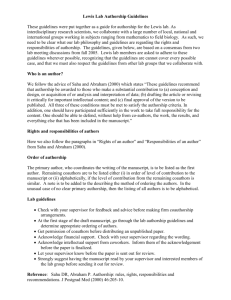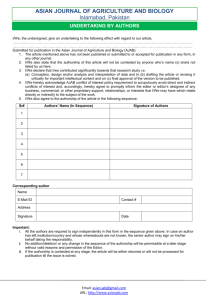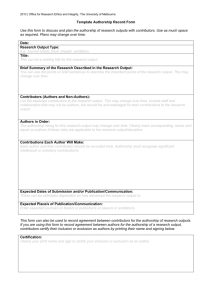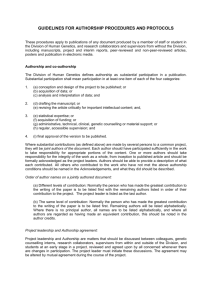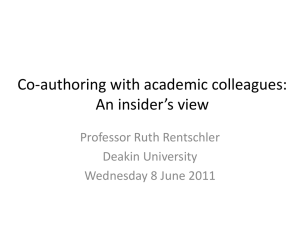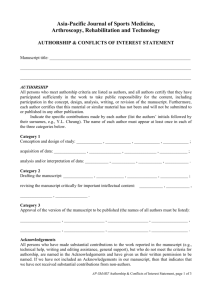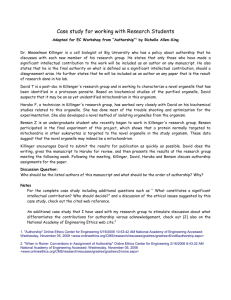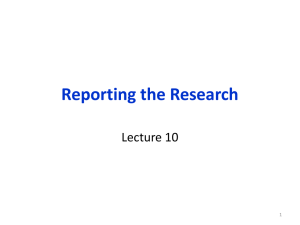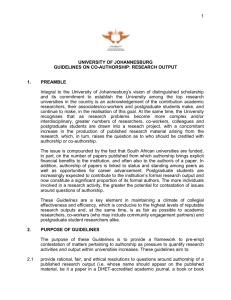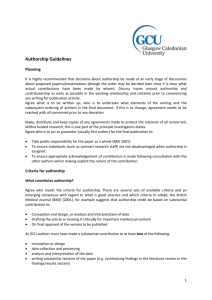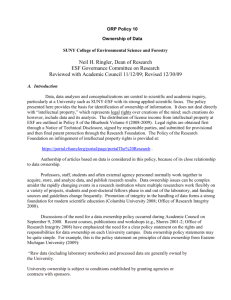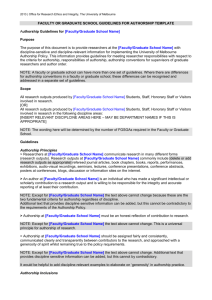Lewis Lab Authorship Guidelines
advertisement
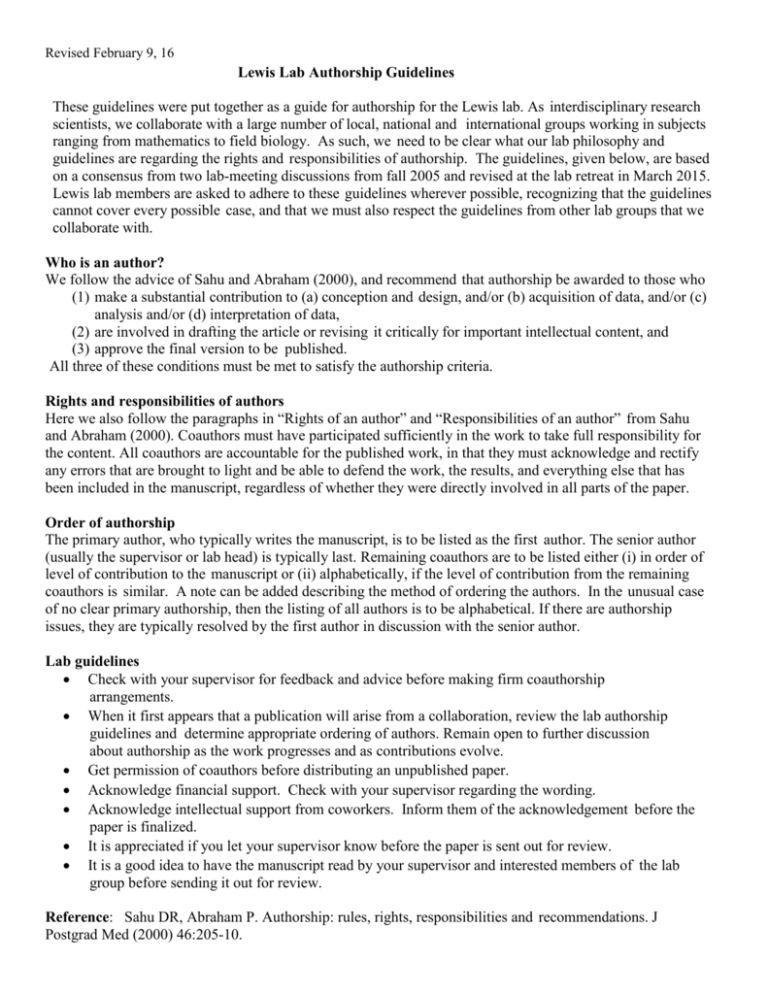
Revised February 9, 16 Lewis Lab Authorship Guidelines These guidelines were put together as a guide for authorship for the Lewis lab. As interdisciplinary research scientists, we collaborate with a large number of local, national and international groups working in subjects ranging from mathematics to field biology. As such, we need to be clear what our lab philosophy and guidelines are regarding the rights and responsibilities of authorship. The guidelines, given below, are based on a consensus from two lab-meeting discussions from fall 2005 and revised at the lab retreat in March 2015. Lewis lab members are asked to adhere to these guidelines wherever possible, recognizing that the guidelines cannot cover every possible case, and that we must also respect the guidelines from other lab groups that we collaborate with. Who is an author? We follow the advice of Sahu and Abraham (2000), and recommend that authorship be awarded to those who (1) make a substantial contribution to (a) conception and design, and/or (b) acquisition of data, and/or (c) analysis and/or (d) interpretation of data, (2) are involved in drafting the article or revising it critically for important intellectual content, and (3) approve the final version to be published. All three of these conditions must be met to satisfy the authorship criteria. Rights and responsibilities of authors Here we also follow the paragraphs in “Rights of an author” and “Responsibilities of an author” from Sahu and Abraham (2000). Coauthors must have participated sufficiently in the work to take full responsibility for the content. All coauthors are accountable for the published work, in that they must acknowledge and rectify any errors that are brought to light and be able to defend the work, the results, and everything else that has been included in the manuscript, regardless of whether they were directly involved in all parts of the paper. Order of authorship The primary author, who typically writes the manuscript, is to be listed as the first author. The senior author (usually the supervisor or lab head) is typically last. Remaining coauthors are to be listed either (i) in order of level of contribution to the manuscript or (ii) alphabetically, if the level of contribution from the remaining coauthors is similar. A note can be added describing the method of ordering the authors. In the unusual case of no clear primary authorship, then the listing of all authors is to be alphabetical. If there are authorship issues, they are typically resolved by the first author in discussion with the senior author. Lab guidelines Check with your supervisor for feedback and advice before making firm coauthorship arrangements. When it first appears that a publication will arise from a collaboration, review the lab authorship guidelines and determine appropriate ordering of authors. Remain open to further discussion about authorship as the work progresses and as contributions evolve. Get permission of coauthors before distributing an unpublished paper. Acknowledge financial support. Check with your supervisor regarding the wording. Acknowledge intellectual support from coworkers. Inform them of the acknowledgement before the paper is finalized. It is appreciated if you let your supervisor know before the paper is sent out for review. It is a good idea to have the manuscript read by your supervisor and interested members of the lab group before sending it out for review. Reference: Sahu DR, Abraham P. Authorship: rules, rights, responsibilities and recommendations. J Postgrad Med (2000) 46:205-10.
